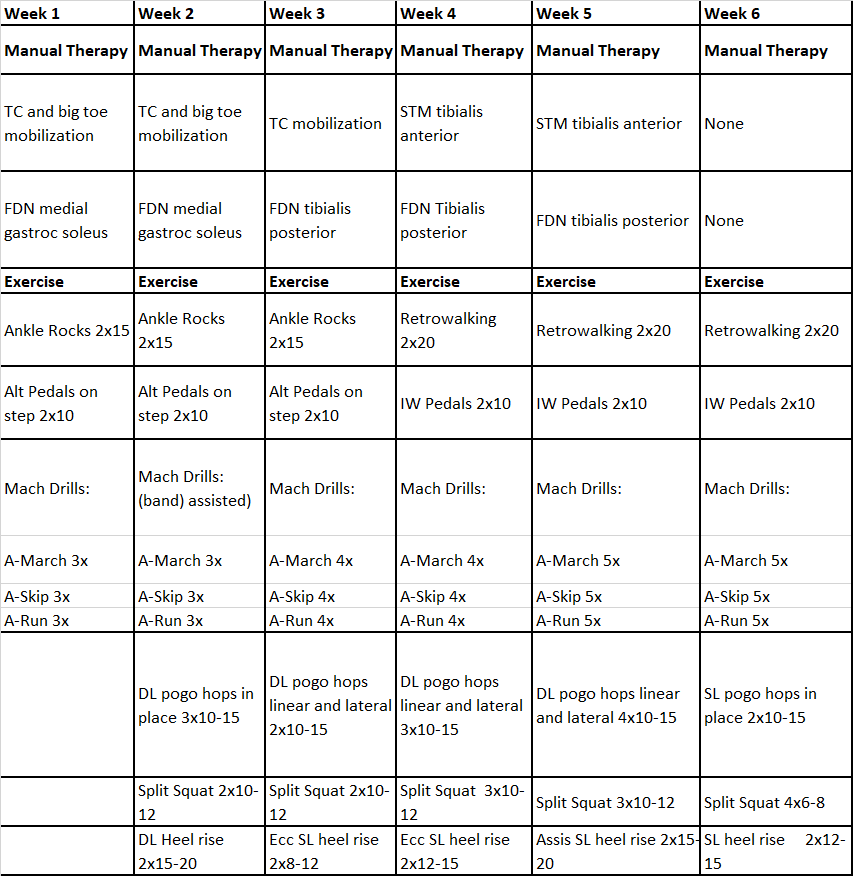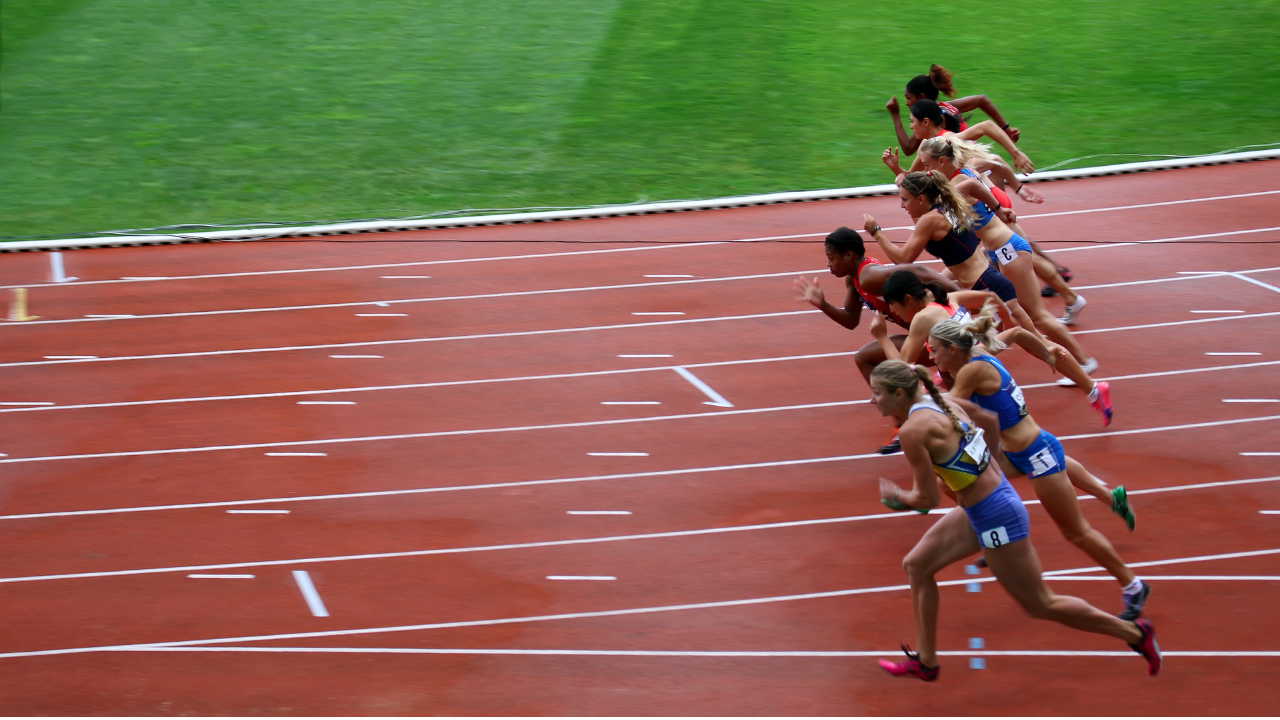Case Study: Lower Leg Pain in D-I Sprinter
Background: Division 1 sprinter has been experiencing intermittent calve pain for the past 3 months. She does not notice pain while sprinting but does have significant increase in pain when she slows down from a sprint as well as during slower steady state runs (warm-ups around the track). Pain is reported along anterior lateral lower leg, along with posterior medial lower leg on right. Pt had received radiographs within last 2 weeks and resulted in no signs of fracture.
Goals: Return to competing 100m and 200m along with warm-ups without lower leg pain
Past Medical History : Stress fractures in B lower legs 2 years ago, multiple hamstring strains over the past 3 years.
Limitations: Only able to visit clinic 1x/week due to travel and school.
Objective measures:
- Standing posture:
- Flat foot (pes planus)
- Over pronates with walking
- Range Of Motion:
- Ankle:
- dorsiflexion 8 degrees B
- plantarflexion, eversion, inversion within normal limits except with mild stretch pain at end range plantarflexion
- ½ kneel dorsiflexion test: limited 1.5” from wall
- Knee:
- Normal flexion and extension
- Hip:
- Hip flexion: normal with mild pinching pain at end range
- Extension: lacking 15 degrees of hip extension B
- Mobility:
- Talocrural joint: hypomobile
- Big toe: 50% extension in neutral and dorsiflexed position.
- Manual Muscle Testing:
- 5/5 all planes and pain free
- Single Leg heel rise:
- Unable to perform 1 to full range and reported pain in posterior medial calve
- Able to perform 18 on L
- Special testing:
- Bump test: negative
- Fulcrum test: negative
- Palpation:
- Tenderness along medial gastroc head, tibialis posterior, tibialis anterior
At the first visit, since she was asymptomatic while performing her actual sport (100m & 200m), and she was advised to continue participating in sprinting during practice. Since she reported increased pain with steady state running during warm-ups, she was asked to either completely discontinue the warm-up run or modify to only running pain free distances, which resulted in 1 lap around the track.
I was able to watch and record her running mechanics within her first session, and she did demonstrate a few faults. The biggest breakdown in her running gait had been her increased stride length and backside mechanics. Since we decided together to limit her steady state running to only being pain free, we also wanted something to replace her warm-up lap.
To address her lower activity level along with improving her running mechanics, it was decided to use Mach-drills to fill the gap. These drills are intended to improve her arm action along with improving her front side mechanics which would result in an improved foot strike pattern.
Below you’ll find what each session entailed, along with progressions she was given on a weekly basis to work on. She never once stopped running track, and went on to have a successful, pain-free season.











